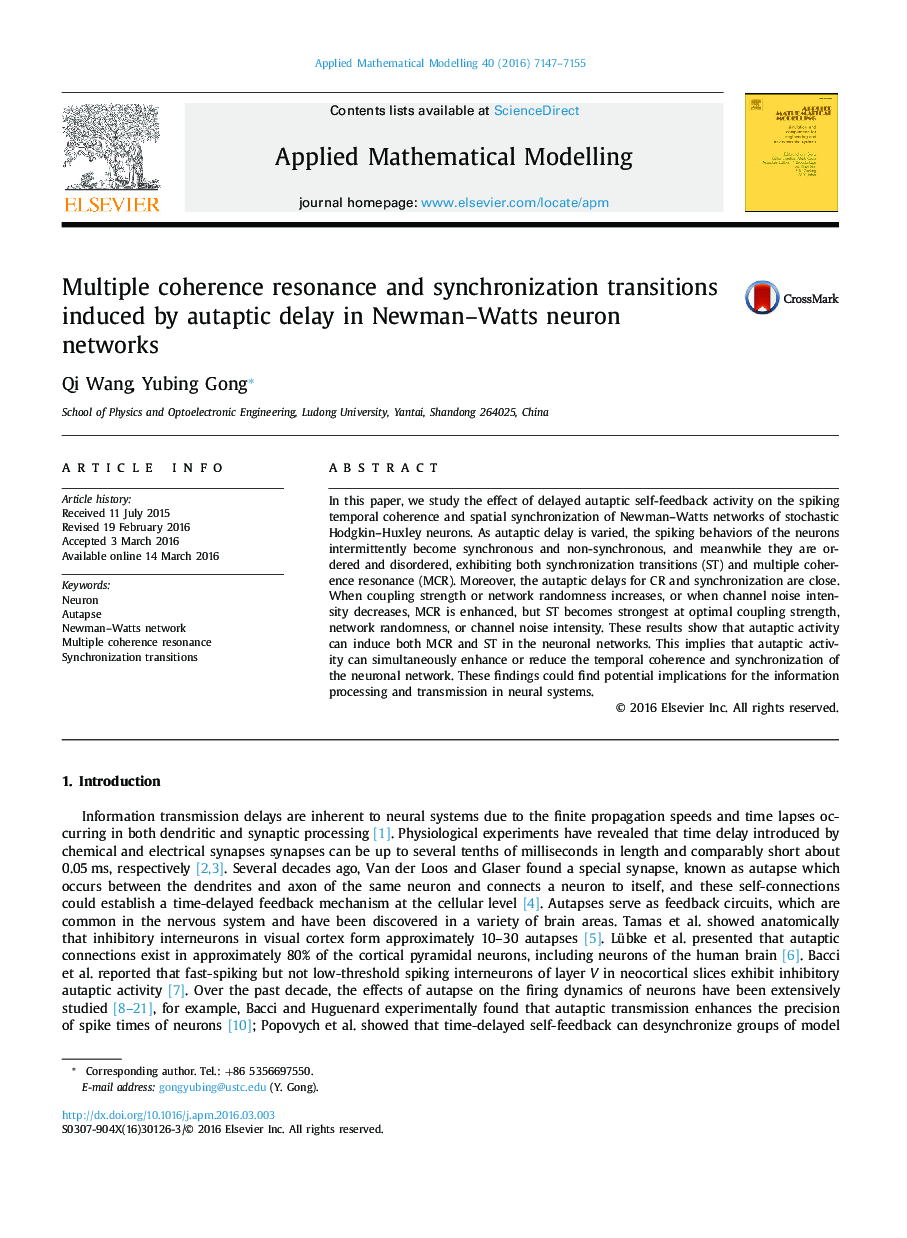| Article ID | Journal | Published Year | Pages | File Type |
|---|---|---|---|---|
| 1702819 | Applied Mathematical Modelling | 2016 | 9 Pages |
•MCR and ST induced by autaptic self-feedback activity.•CR and synchronization occur simultaneously at the same autaptic delays.•ST becomes strongest when coupling strength, network randomness or channel noise intensity is optimal.
In this paper, we study the effect of delayed autaptic self-feedback activity on the spiking temporal coherence and spatial synchronization of Newman–Watts networks of stochastic Hodgkin–Huxley neurons. As autaptic delay is varied, the spiking behaviors of the neurons intermittently become synchronous and non-synchronous, and meanwhile they are ordered and disordered, exhibiting both synchronization transitions (ST) and multiple coherence resonance (MCR). Moreover, the autaptic delays for CR and synchronization are close. When coupling strength or network randomness increases, or when channel noise intensity decreases, MCR is enhanced, but ST becomes strongest at optimal coupling strength, network randomness, or channel noise intensity. These results show that autaptic activity can induce both MCR and ST in the neuronal networks. This implies that autaptic activity can simultaneously enhance or reduce the temporal coherence and synchronization of the neuronal network. These findings could find potential implications for the information processing and transmission in neural systems.
